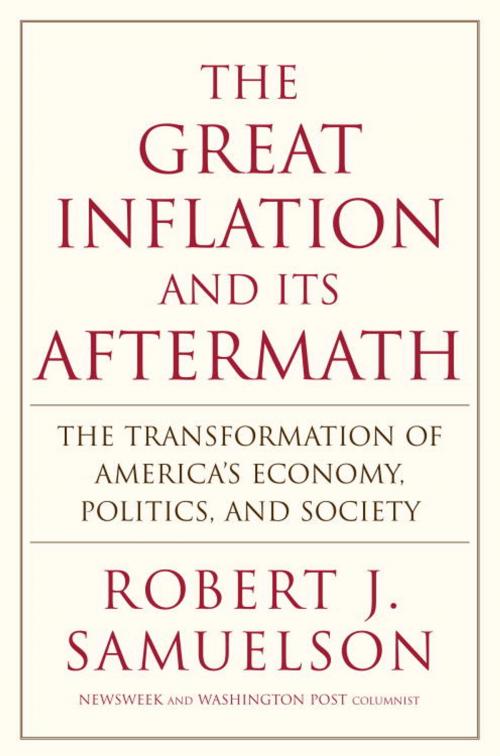The Great Inflation and Its Aftermath
The Past and Future of American Affluence
Business & Finance, Economics, Economic History, Finance & Investing, Investments & Securities, Nonfiction, History, Americas, United States, 20th Century| Author: | Robert J. Samuelson | ISBN: | 9781588366924 |
| Publisher: | Random House Publishing Group | Publication: | November 11, 2008 |
| Imprint: | Random House | Language: | English |
| Author: | Robert J. Samuelson |
| ISBN: | 9781588366924 |
| Publisher: | Random House Publishing Group |
| Publication: | November 11, 2008 |
| Imprint: | Random House |
| Language: | English |
The Great Inflation in the 1960s and 1970s, notes award-winning columnist Robert J. Samuelson, played a crucial role in transforming American politics, economy, and everyday life. The direct consequences included stagnation in living standards, a growing belief—both in America and abroad—that the great-power status of the United States was ending, and Ronald Reagan’s election to the presidency in 1980. But that is only half the story. The end of high inflation led to two decades of almost uninterrupted economic growth, rising stock prices and ever-increasing home values. Paradoxically, this prolonged prosperity triggered the economic and financial collapse of 2008 and 2009 by making Americans—from bank executives to ordinary homeowners—overconfident, complacent, and careless. The Great Inflation and its Aftermath, Samuelson contends, demonstrated that we have not yet escaped the boom-and-bust cycles common in the nineteenth and early twentieth centuries. This is a sobering tale essential for anyone who wants to understand today’s world.
The Great Inflation in the 1960s and 1970s, notes award-winning columnist Robert J. Samuelson, played a crucial role in transforming American politics, economy, and everyday life. The direct consequences included stagnation in living standards, a growing belief—both in America and abroad—that the great-power status of the United States was ending, and Ronald Reagan’s election to the presidency in 1980. But that is only half the story. The end of high inflation led to two decades of almost uninterrupted economic growth, rising stock prices and ever-increasing home values. Paradoxically, this prolonged prosperity triggered the economic and financial collapse of 2008 and 2009 by making Americans—from bank executives to ordinary homeowners—overconfident, complacent, and careless. The Great Inflation and its Aftermath, Samuelson contends, demonstrated that we have not yet escaped the boom-and-bust cycles common in the nineteenth and early twentieth centuries. This is a sobering tale essential for anyone who wants to understand today’s world.















